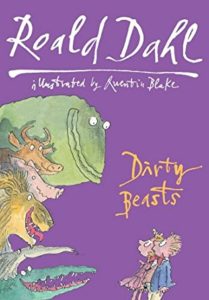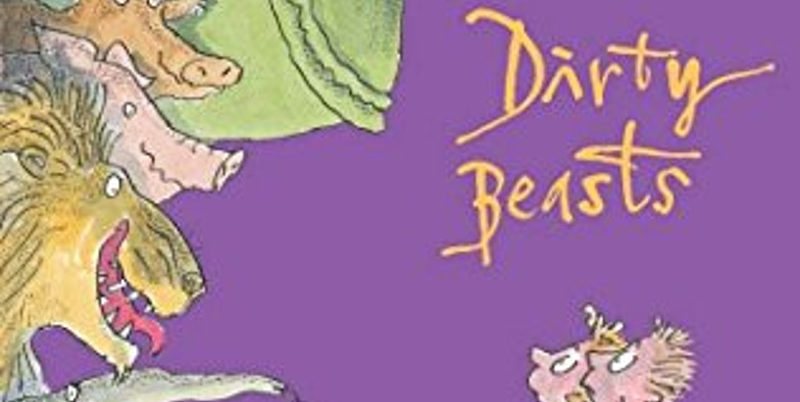Disclosure: I did not receive any compensation for this review. I was not even accosted by any “dirty beasts.” Cover art is copyright Puffin Books.
 ‘Dirty Beasts’ is a book of poems by Roald Dahl about various animals, most of whom seem to be aggressive towards humans in one form or another.
‘Dirty Beasts’ is a book of poems by Roald Dahl about various animals, most of whom seem to be aggressive towards humans in one form or another.
Sometimes the animal is lashing out against abuse (The Anteater) or experiencing intense paranoia (The Pig) but mostly the animals seem to taunt and attack humans for pure enjoyment.
The poems follow a rhyming couplet scheme. I think that is what they are called – AA BB CC etc. Each line is eight syllables long.
My favourite poems are the shorter ones – the ones that take up less than a page or a little over. They seem to be the cleverest and have the most effective rhyming. Most of the poems dodder on for pages. They read like short stories with continuous run-on sentences and the rhythmic pace suffers.
There is no poem about hedgehogs, though one does make an appearance in one of Quentin Blake’s illustrations at the end of the poem The Porcupine. This is most unpleasant as I do not think hedgehogs deserved to be lumped in under the title ‘Dirty Beasts’ even in such a minor role.
With the exception of The Porcupine, who does nothing but be sat upon, the “beasts” in Dahl’s poems range from hungry to xenophobic. The French are stereotyped to an extravagance as rabid snail and frog eaters, and an Afghani man is referred to as a “silly foreign freak” and defecated upon.
Then there are the poems that seek to fuel the propaganda that these “beasts” live to eat little children. I must say that dousing them in butterscotch and caramel does sound rather appetizing. However, the most disturbing part of the poem The Crocodile is when an adult tells their child “Go lock the door and fetch my gun!” That is not going to end well.
The last poem in the book is about something called The Tummy Beast, which I assume is a Chestburster.
If you pick up ‘Dirty Beasts’ by Roald Dahl, I recommend The Crocodile, The Lion, and The Scorpion. These poems were enjoyable to read but the rest of the book has not left me with a desire to repeat the experience. It has only left me with one question: What is a Roly-Poly Bird?

